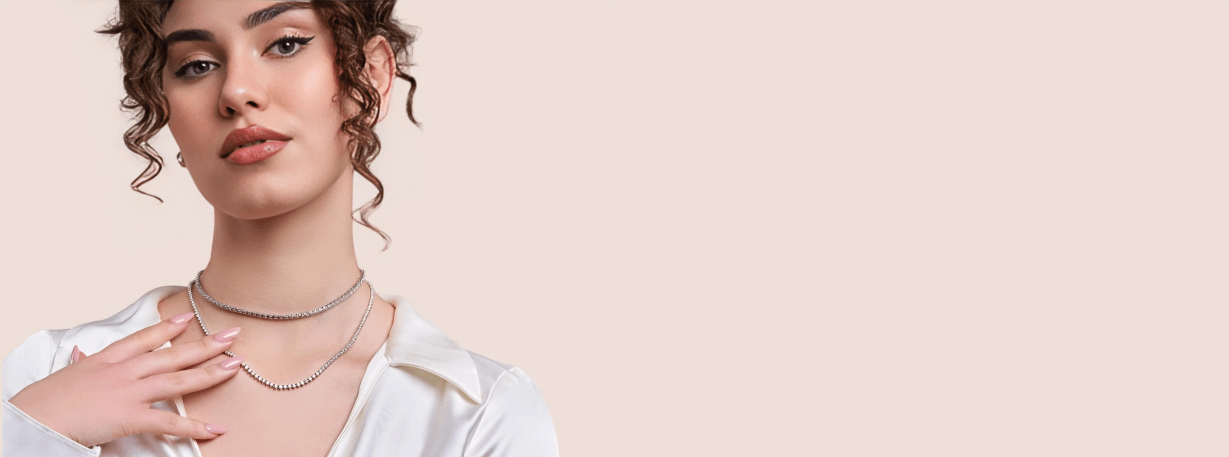Purchasing a diamond ring is not just a financial investment—it’s an emotional one too. Whether it's a symbol of love, a milestone gift, or a personal treat, understanding the intricacies of the diamond industry ensures you make a smart, lasting choice. Here's an in-depth guide with 10 key things to know before buying a diamond ring.
1. Master the 4 Cs: Cut, Clarity, Color, and Carat
The 4 Cs are the global standard for evaluating diamond quality. Each plays a distinct role:
-
Cut: Not just about shape—cut refers to how well a diamond’s facets interact with light. A well-cut diamond reflects light beautifully, giving it that irresistible sparkle.
-
Clarity: This measures the presence of imperfections or “inclusions.” The fewer the inclusions, the higher the clarity grade. Most flaws are microscopic and don’t impact appearance.
-
Color: Diamonds are graded from D (colorless) to Z (noticeably tinted). The less color, the more valuable the diamond—though near-colorless grades (G–J) often appear the same to the naked eye.
-
Carat: This refers to weight. A 1-carat diamond might look bigger or smaller depending on the cut.
Tip: Prioritize cut above all—it's what gives a diamond its brilliance.
2. Set a Realistic Budget—and Stick to It
A diamond ring can be as budget-friendly or luxurious as you want. Forget outdated “three months' salary” rules. Instead:
-
Set a budget that works for your lifestyle and financial situation.
-
Decide which of the 4 Cs matter most to you (larger carat vs better clarity, etc.).
-
Consider that settings, side stones, and customizations will affect cost.
Tip: Lab grown diamonds offer the same beauty and structure as mined diamonds, often at 30–40% less cost.
3. Natural vs. Lab Grown Diamonds: Know the Difference
You’ll likely encounter two options:
-
Natural diamonds: Formed over billions of years beneath the Earth’s surface.
-
Lab grown diamonds: Created in high-tech labs using HPHT or CVD methods. They’re physically, chemically, and optically identical to mined diamonds.
Benefits of Lab Grown Diamonds:
-
Eco-friendly with minimal environmental impact
-
Conflict-free origin
-
Greater affordability for larger sizes or higher quality
Tip: Ask your jeweler about the source and certification of any diamond you're considering.
4. Pick the Right Diamond Shape for Your Style
Shape is a matter of taste, and each one has its own visual appeal and character:
-
Round Brilliant: Most popular, known for maximum sparkle.
-
Princess: Square cut, modern and geometric.
-
Oval: Elegant and elongating for the finger.
-
Emerald: Sleek with step cuts and vintage feel.
-
Cushion: Rounded corners, soft and romantic.
-
Pear, Heart, Marquise: More unique and expressive.
Tip: Try on various shapes to see which complements your hand shape and personal style.
5. Always Buy Certified Diamonds
A diamond grading certificate confirms the quality and authenticity of a diamond. Look for certifications from reputable labs such as:
-
GIA (Gemological Institute of America) – Known for strict grading.
-
IGI (International Gemological Institute) – Often used for lab grown diamonds.
-
AGS (American Gem Society) – Offers detailed cut analysis.
These certificates include an analysis of the 4 Cs and may also include laser inscription on the girdle of the diamond.
Tip: Avoid diamonds graded in-house by the seller or uncertified stones.
6. Choose the Right Setting for Function and Style
The ring setting affects both the appearance and security of the diamond. Popular settings include:
-
Solitaire: Timeless, elegant, focuses attention on a single stone.
-
Halo: A center stone surrounded by smaller diamonds, enhancing size and brilliance.
-
Three-Stone: Symbolizing past, present, and future.
-
Bezel: A modern, protective metal rim surrounds the diamond—ideal for active lifestyles.
-
Pavé: A band encrusted with small diamonds adds shimmer from every angle.
Tip: Consider lifestyle—bezel or low-prong settings are better for everyday wearers.
7. Understand Fluorescence and Its Impact
Fluorescence is the glow a diamond emits under UV light. It can range from None to Very Strong.
-
None to Medium: Generally no visible impact on the diamond’s look.
-
Strong to Very Strong: Can cause a cloudy or oily appearance in certain lighting.
Some buyers prefer diamonds with fluorescence, especially if it reduces price with no visible drawback.
Tip: Always view a diamond in natural and artificial lighting before buying.
8. Compare Prices and Shop Smart
With a wide range of options online and offline, comparison shopping is essential.
-
Online Retailers: Often offer better prices, more selection, and HD images/videos.
-
Brick-and-Mortar: Allow in-person inspection and hands-on service.
When comparing:
-
Use the same criteria (cut, clarity, color, carat).
-
Check if the price includes certification and taxes.
-
Look into return policies, lifetime maintenance, and warranties.
Tip: Beware of discounts that seem too good to be true—quality and certification matter most.
9. Customize for Meaning and Sentiment
A diamond ring becomes more special with personalization:
-
Engravings: Dates, initials, or meaningful quotes.
-
Custom designs: Choose unique band shapes or combine multiple stones.
-
Birthstones: Add them to the band or side stones for symbolic value.
-
Mixed metals: White gold, rose gold, and yellow gold combinations.
Tip: Many online jewelers offer design-your-own tools and previews.
10. Think Long-Term: Insurance, Resizing, and Care
Protect your investment by planning for the future:
-
Insurance: Cover against loss, theft, or damage.
-
Resizing: Ask if resizing is included or possible later.
-
Maintenance: Rings should be cleaned and prongs checked yearly to avoid diamond loss.
Also consider upgrade policies—some jewelers offer lifetime trade-in programs.
Tip: Get your ring appraised for insurance purposes if it's not already valued in the certificate.
Conclusion: Confidence in Every Sparkle
Buying a diamond ring is a blend of emotion and education. The more informed you are, the better choices you’ll make—both financially and symbolically. Whether you go with a natural or lab grown diamond, whether it’s for love or luxury, a well-chosen diamond ring is timeless.








